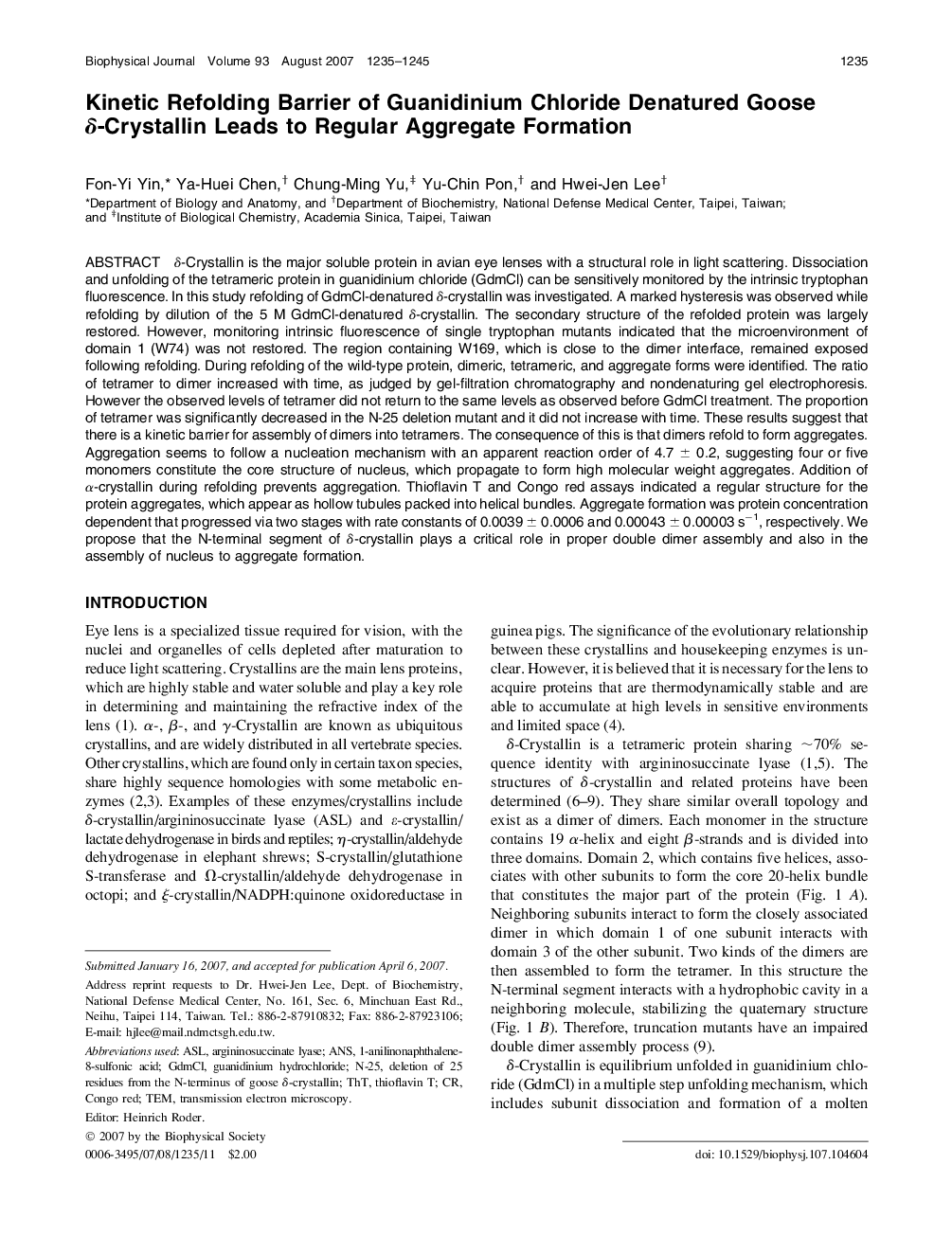| کد مقاله | کد نشریه | سال انتشار | مقاله انگلیسی | نسخه تمام متن |
|---|---|---|---|---|
| 1957535 | 1057884 | 2007 | 11 صفحه PDF | دانلود رایگان |

δ-Crystallin is the major soluble protein in avian eye lenses with a structural role in light scattering. Dissociation and unfolding of the tetrameric protein in guanidinium chloride (GdmCl) can be sensitively monitored by the intrinsic tryptophan fluorescence. In this study refolding of GdmCl-denatured δ-crystallin was investigated. A marked hysteresis was observed while refolding by dilution of the 5 M GdmCl-denatured δ-crystallin. The secondary structure of the refolded protein was largely restored. However, monitoring intrinsic fluorescence of single tryptophan mutants indicated that the microenvironment of domain 1 (W74) was not restored. The region containing W169, which is close to the dimer interface, remained exposed following refolding. During refolding of the wild-type protein, dimeric, tetrameric, and aggregate forms were identified. The ratio of tetramer to dimer increased with time, as judged by gel-filtration chromatography and nondenaturing gel electrophoresis. However the observed levels of tetramer did not return to the same levels as observed before GdmCl treatment. The proportion of tetramer was significantly decreased in the N-25 deletion mutant and it did not increase with time. These results suggest that there is a kinetic barrier for assembly of dimers into tetramers. The consequence of this is that dimers refold to form aggregates. Aggregation seems to follow a nucleation mechanism with an apparent reaction order of 4.7 ± 0.2, suggesting four or five monomers constitute the core structure of nucleus, which propagate to form high molecular weight aggregates. Addition of α-crystallin during refolding prevents aggregation. Thioflavin T and Congo red assays indicated a regular structure for the protein aggregates, which appear as hollow tubules packed into helical bundles. Aggregate formation was protein concentration dependent that progressed via two stages with rate constants of 0.0039 ± 0.0006 and 0.00043 ± 0.00003 s−1, respectively. We propose that the N-terminal segment of δ-crystallin plays a critical role in proper double dimer assembly and also in the assembly of nucleus to aggregate formation.
Journal: - Volume 93, Issue 4, 15 August 2007, Pages 1235–1245